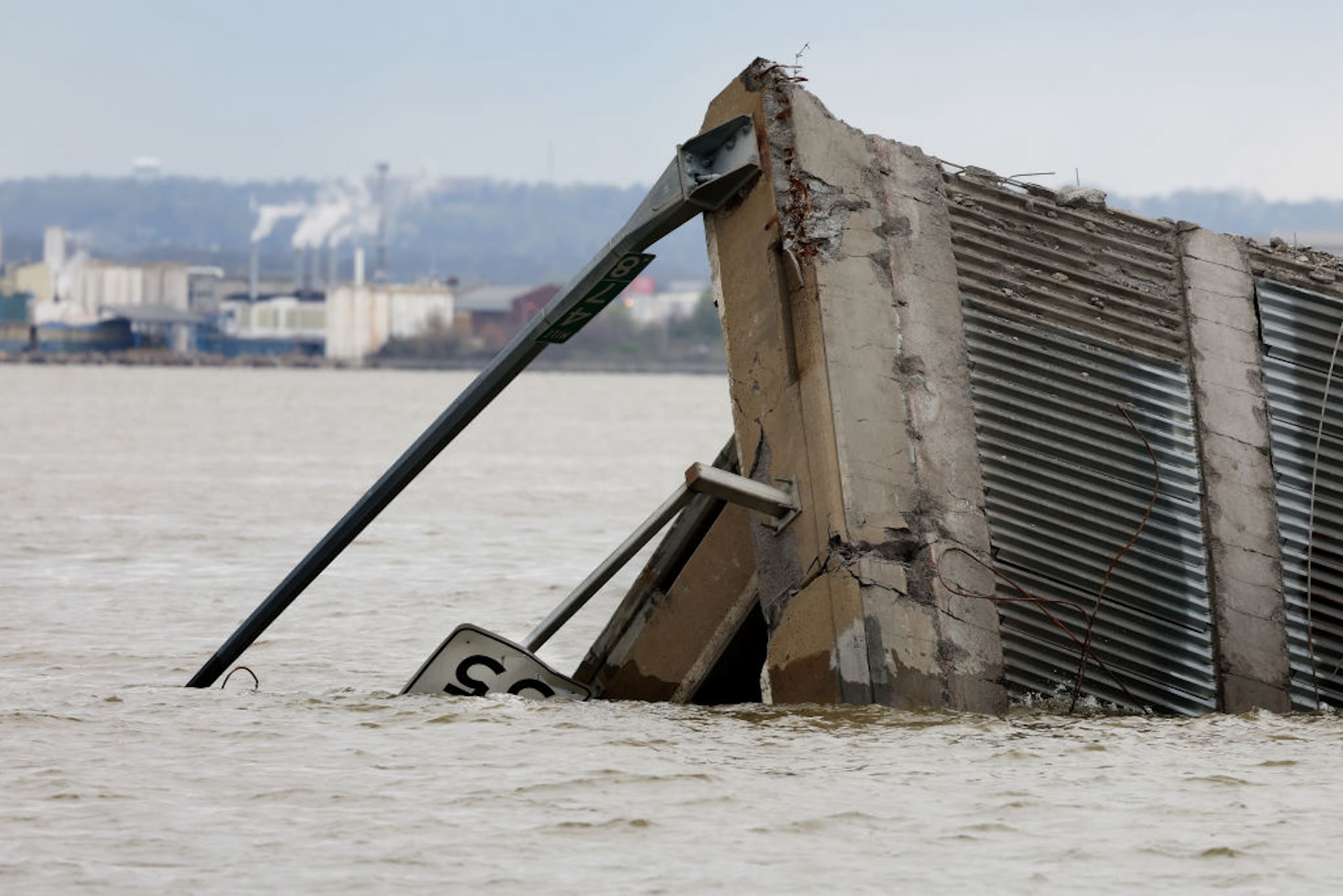Environmentalists are concerned about the state of a Baltimore river after the shipwreck that destroyed the Francis Scott Key Bridge potentially leaked harmful pollutants into the water.
What happened?
In March, a container ship ran into Baltimore's Francis Scott Key Bridge, causing it to collapse and fall partly onto the ship.
The ship carried 764 tons of hazardous materials that environmentalists fear could have leaked into the Patapsco River. These included corrosive and flammable liquids and lithium-ion batteries — at least 14 of the 56 containers onboard were reported as damaged by officials.
First responders also reported a sheen on the water, which appeared to be pollution from the ship.
Why are these pollutants concerning?
"Any time there's a catastrophic event like this, there's a potential for water pollution," Leda Huta, executive director of Waterkeepers Chesapeake, told The Washington Post. "There are more than a million people living in that watershed, and it's been a longtime struggle to ensure that the community has clean water that's swimmable, fishable and drinkable."
Lithium-ion batteries are of concern because they contain toxic metals such as cobalt. According to the Agency for Toxic Substances and Disease Registry, non-radioactive cobalt has been linked to cancer in people and animals following exposure through food or water.
Dangerous pollutants in the water could also affect local crab fishing. However, the bridge collapse happened amid a decades-long effort to clean up industrial pollution in the Patapsco River and Chesapeake Bay, and one local captain who has been crabbing for over two decades told the Post that he was more worried about the impacts of wastewater treatment plants on the river and nearby Cox Creek.
The Patapsco isn't the only river within the Chesapeake Bay watershed to face major obstacles. For example, Maryland's Gunpowder River lost a vast underwater prairie home for an array of wildlife, and the water turned orange because of muddy runoff from a nearby housing development.
And in Virginia, researchers have discovered cancer-causing contaminants in sediments and fish in a Chesapeake Bay tributary near a coal ash landfill.
What's being done about possible contaminants in the river?
At the end of March, officials placed 2,400 feet of sorbent boom, a material that can absorb oil spills, around the crash site. They also placed 2,400 feet of hard contaminant boom around the ship. These booms have a weighted skirt that hangs underwater to help stop oil from spreading.
However, the Chesapeake Bay Foundation raised concerns that these efforts could actually stir up toxic sediments that are already at the bottom of the river. The contaminants, they said, could wash ashore and affect nearby communities.
Join our free newsletter for cool news and cool tips that make it easy to help yourself while helping the planet.









